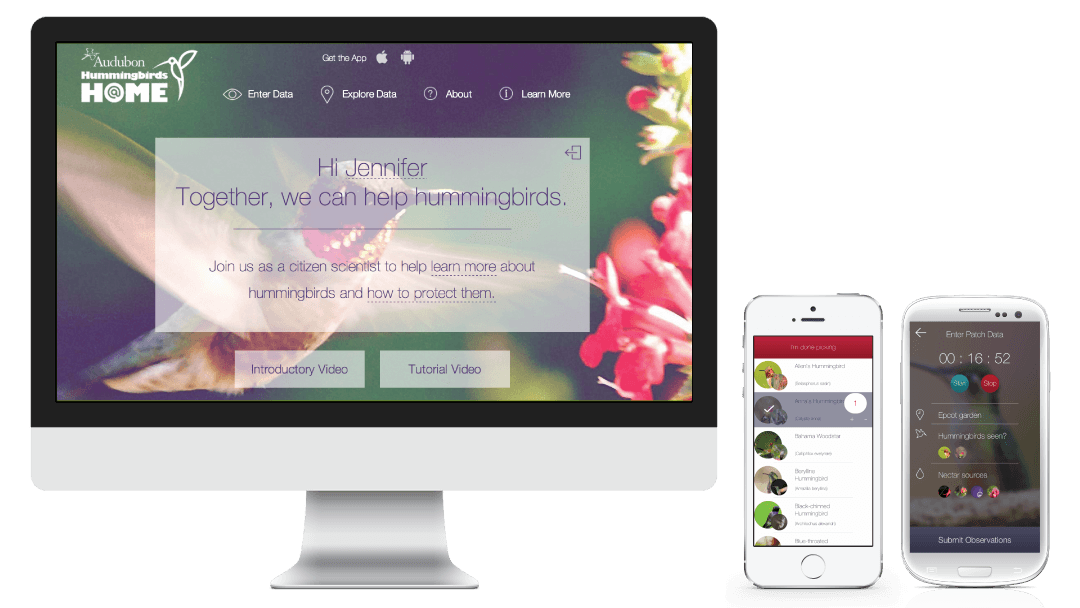Hummingbirds at Home is one of the world’s most advanced citizen science initiatives.
It began as a simple question. Could the National Audubon Society take citizen science to the next level?
The National Audubon Society has been at the forefront of citizen science – the crowdsourcing of scientific data collection – since they started the Christmas Bird Count back in 1900. But their leadership wanted to test whether they could go further and engage citizen scientists to collect the kind of robust data their scientists needed to assess a continental-scale question. They wanted to know whether climate change was affecting the synchronous relationship between hummingbird migration and the bloom times of their food resources.
The unknown was whether Audubon could engage people to put more effort into collecting the necessary data and to repeat that data collection process many times over the course of hummingbird migration season.
i
The initiative would need to generate robust scientific data while being simple and fun to use.
We worked with Audubon from the ground level to envision, design, and create Hummingbirds at Home. The result was a new way to engage the public in science.
Participants use their smartphones (iOS and Android) or computers to select a survey type and submit their data. The number and type of surveys is logged and updated with each survey submitted. Participants can also use the website to review a map showing the data collected by participants, which can be filtered by hummingbird species, survey type, or date range.
The surveys are designed to generate data Audubon scientists can analyze in a robust way, providing information not only on the identity and number of hummingbirds sighted but also the amount of time participants spent looking for them. Using this dataset researchers at Audubon can quantify hummingbird feeding behavior and make recommendations on which nectar-bearing plants people can grow to provide the biggest impact for hummingbirds.
You can check out the beta version of Hummingbirds at Home here or watch the introductory video below.

Outcomes
Currently more than 18,000 people from across the country have signed up to be citizen scientists in the Hummingbirds at Home program. As a network of data collectors they are providing valuable information in real time to Audubon researchers, who will then determine whether patterns of hummingbird migrations are changing and devise recommendations for how we can create favorable environments in our own backyards.
